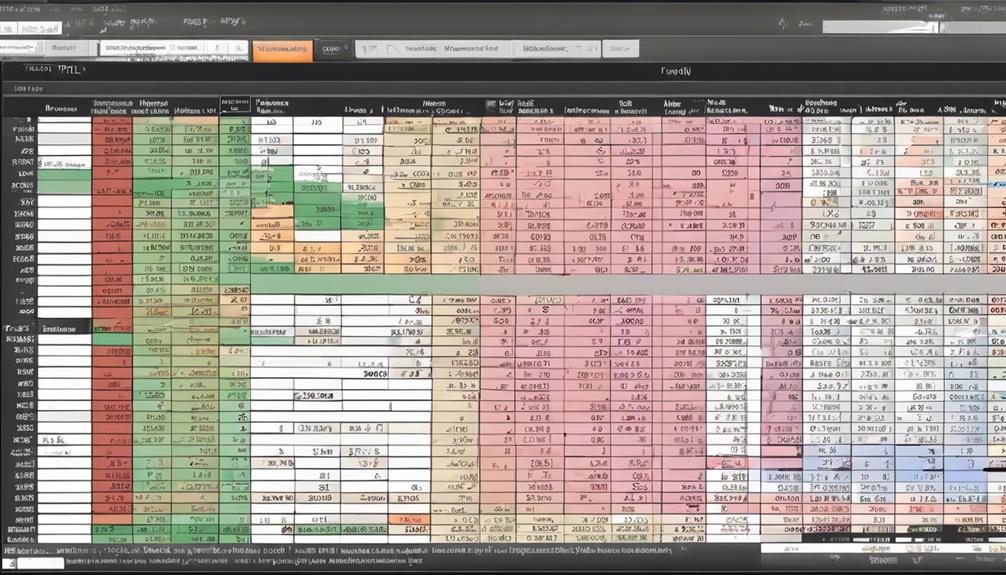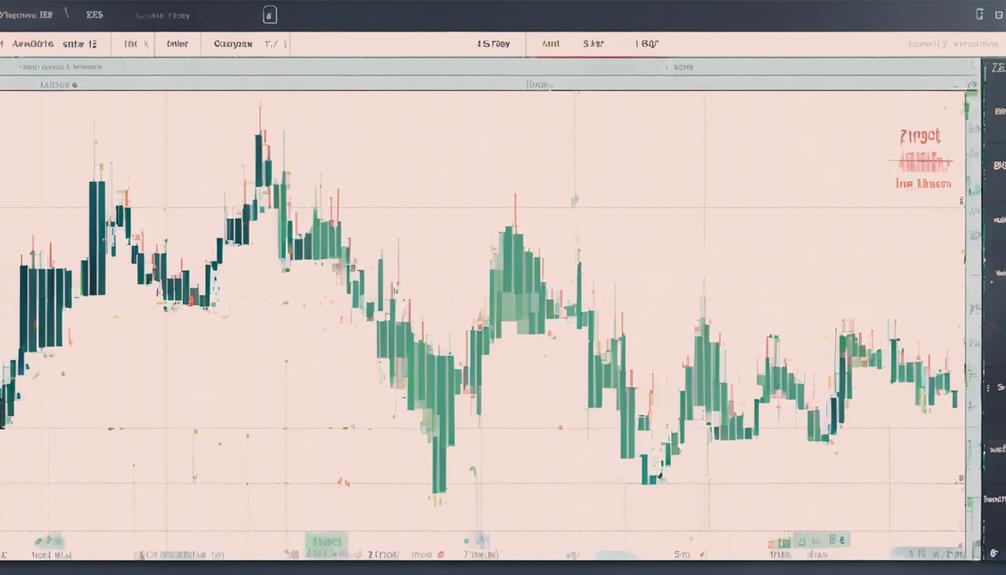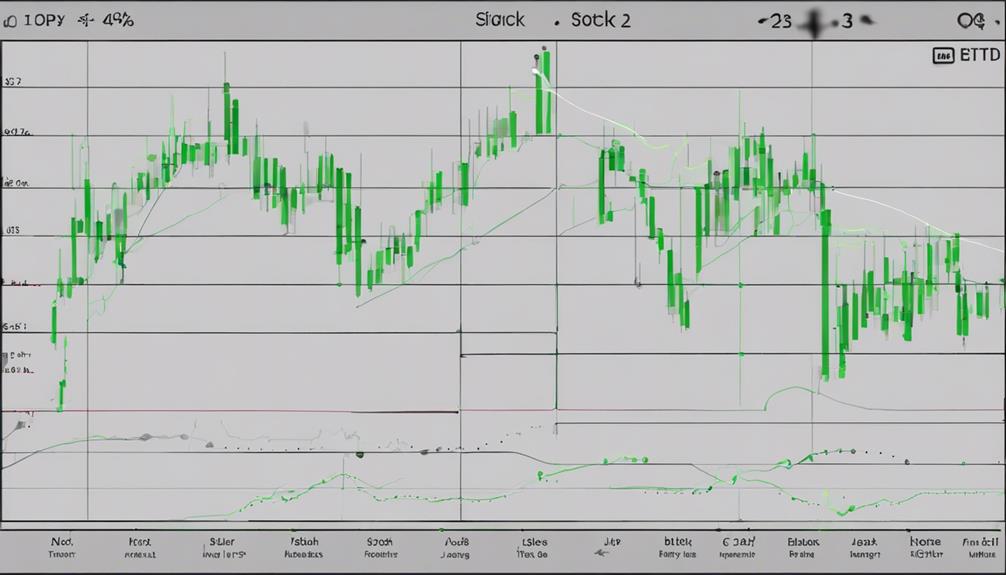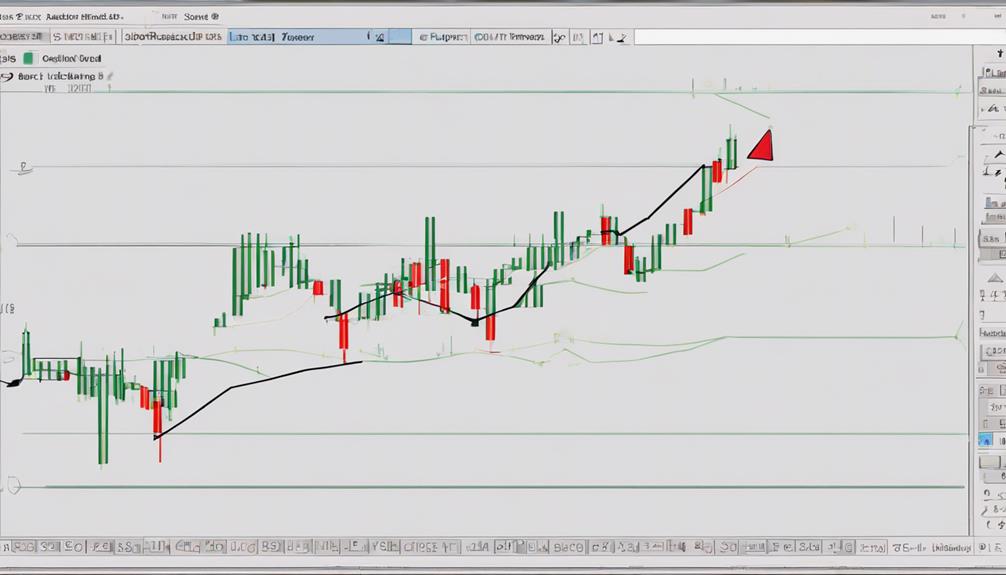The Trix Indicator in financial analysis stands as a meticulous tool valued for its ability to unveil market trends and potential reversals. Through its triple exponential average mechanism, Trix adeptly sieves through market noise, presenting traders with timely signals crucial for informed decision-making.
Its application in various trading strategies, such as zero-line crossovers and divergences, offers traders avenues to pinpoint strategic entry and exit points with precision.
But how does this intricate indicator fare when faced with volatile market conditions and evolving trends?
Definition and Purpose of Trix Indicator
The Trix indicator, known as the Triple Exponential Average indicator, serves as a powerful tool in technical analysis for discerning trends and potential reversals in financial markets. It focuses on the rate of change of a triple exponential moving average to filter out noise and highlight significant price trends.
By calculating the rate of change over a certain period, TRIX helps generate trading signals and identify potential trends in the market. When combined with other indicators such as moving averages, RSI, and MACD, the TRIX indicator can provide enhanced accuracy in making trading decisions.
This approach of combining indicators can offer unique perspectives on price movements, enabling traders to stay ahead of market trends. The main purpose of the TRIX indicator is to provide traders with a reliable tool for trend analysis and to assist in making informed decisions based on the generated signals.
Calculation Method of Trix Indicator

Exploring the methodology behind the Trix indicator involves calculating the percentage rate of change between two triple-smoothed exponential moving averages. This calculation helps filter out market noise, providing traders with a clearer view of momentum and trend direction.
The Triple Exponential Moving Average (TRIX) line is plotted based on these calculations and oscillates above and below the zero line. When the TRIX line is above zero, it indicates potential overbought conditions, while below zero suggests potential oversold conditions.
This information can assist traders in identifying possible trend reversals and determining optimal entry or exit points in the market. The Trix indicator is a valuable tool in technical analysis, enhancing market analysis and decision-making processes for traders looking to capitalize on momentum signals and improve their overall trading strategies.
Interpreting Trix Indicator Signals

Upon analyzing Trix indicator signals, traders can leverage key insights to make informed decisions in the financial markets. The TRIX crossing above zero signifies a buy signal, while a crossing below zero indicates a sell signal, providing clear points for traders to act upon.
Furthermore, the positioning of the TRIX line in relation to the signal line can indicate the prevailing trend, with the TRIX line above signaling a bullish trend and below suggesting a bearish trend. Traders should also pay attention to divergences between the TRIX indicator and the asset price, as these can hint at potential trend reversals.
Signal line crossovers offer additional opportunities for traders to identify optimal entry and exit points in the market. Lastly, the TRIX indicator assists in recognizing overbought and oversold market conditions, enabling traders to make strategic decisions based on the current market sentiment.
Advantages of Using Trix Indicator

What advantages does the Trix Indicator offer in financial analysis that make it a valuable tool for traders seeking to make informed decisions in the market?
The Trix Indicator stands out in financial analysis due to its ability to effectively filter out market noise, enabling traders to conduct accurate trend analysis.
As a leading indicator, Trix provides early signals of potential market movements, giving traders a competitive edge in decision-making.
Its customizable parameters allow for flexibility, catering to various trading styles and preferences.
By reducing false signals, Trix enhances overall trading effectiveness, increasing the probability of successful trades.
Additionally, when combined with other indicators, Trix can significantly improve the precision and reliability of trade signals.
Traders benefit from the Trix Indicator's capacity to navigate through market complexities, offering a more refined approach to interpreting market trends and making timely trading decisions.
Practical Application of Trix Indicator

The practical application of the Trix Indicator in financial analysis involves utilizing its triple exponential moving averages to identify overbought and oversold conditions, detect trend reversals, and confirm market trends effectively. By smoothing out price data through triple exponential moving averages, the TRIX indicator reduces noise and provides clearer signals for traders.
Overbought conditions suggest that the price may be too high and could soon reverse, while oversold conditions indicate potential buying opportunities as prices may have dropped too low. Additionally, TRIX crossovers and divergences can be used to pinpoint entry and exit points with precision.
When combined with other technical indicators, such as moving averages or oscillators, TRIX can enhance the robustness of trading strategies. Traders and analysts rely on the TRIX indicator for its ability to offer valuable insights into market dynamics, helping them make informed decisions in the ever-changing financial landscape.
What Are the Benefits of Using the Trix Indicator in Financial Analysis and Trading?
The importance of TRIX indicator lies in its ability to identify trends and potential price reversals. By smoothing out price movements, it helps traders make more informed decisions. Its effectiveness in spotting market momentum and generating buy/sell signals makes it a valuable tool in financial analysis and trading strategies.
How Does the Trix Indicator Affect Financial Analysis and Investment Strategies?
The Trix indicator impact investments by analyzing the rate of change in a security’s price movements. This helps investors identify overbought or oversold conditions, leading to more informed buying and selling decisions. By incorporating the Trix indicator into financial analysis, investors can refine their investment strategies for greater potential returns.
Frequently Asked Questions
How Do You Read a TRIX Indicator?
Reading a TRIX indicator involves understanding its signal crossovers above or below zero for buy or sell indications, recognizing divergences with price for potential market shifts, utilizing it as a leading indicator, and combining it with moving averages to identify price trends accurately.
What Is the Best Setting for the TRIX Indicator?
Optimal settings for the TRIX indicator depend on the trader's time horizon and risk tolerance. Shorter periods like 5 or 7 offer sensitive signals for short-term traders, while longer periods such as 20 or 25 suit those focusing on longer trends. Experimentation allows customization for individual preferences.
Is Trix a Good Indicator?
TRIX serves as a reliable indicator for market analysis, offering insights into overbought and oversold conditions. Its ability to filter out noise, provide early trend reversal signals, and adapt to various strategies enhances its effectiveness in trading.
What Is the Trix Crossover Strategy?
The TRIX crossover strategy involves zero-line crossovers for buy/sell signals. A bullish signal is when TRIX crosses above zero, indicating upward momentum, while a bearish signal is when TRIX crosses below zero, signaling a potential downturn.
Conclusion
In conclusion, the Trix indicator serves as a valuable tool in financial analysis, offering insights into market trends and potential reversals. By utilizing its triple exponential average calculation, traders can effectively filter out noise and make informed decisions.
When combined with other indicators, such as moving averages and the Relative Strength Index, the Trix indicator can enhance technical analysis and assist in identifying optimal entry and exit points. Its versatility and reliability make it a crucial component in trading strategies.


